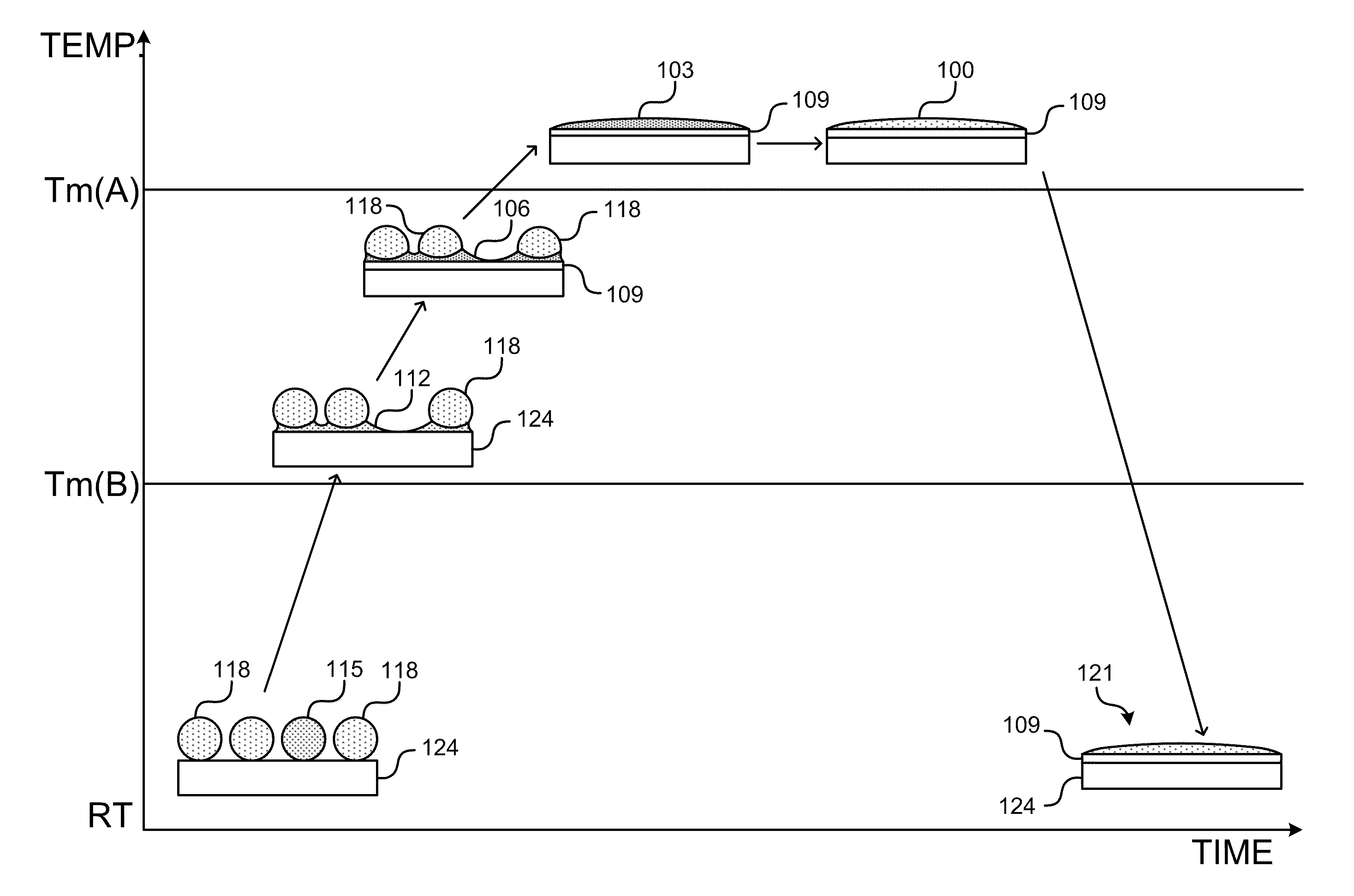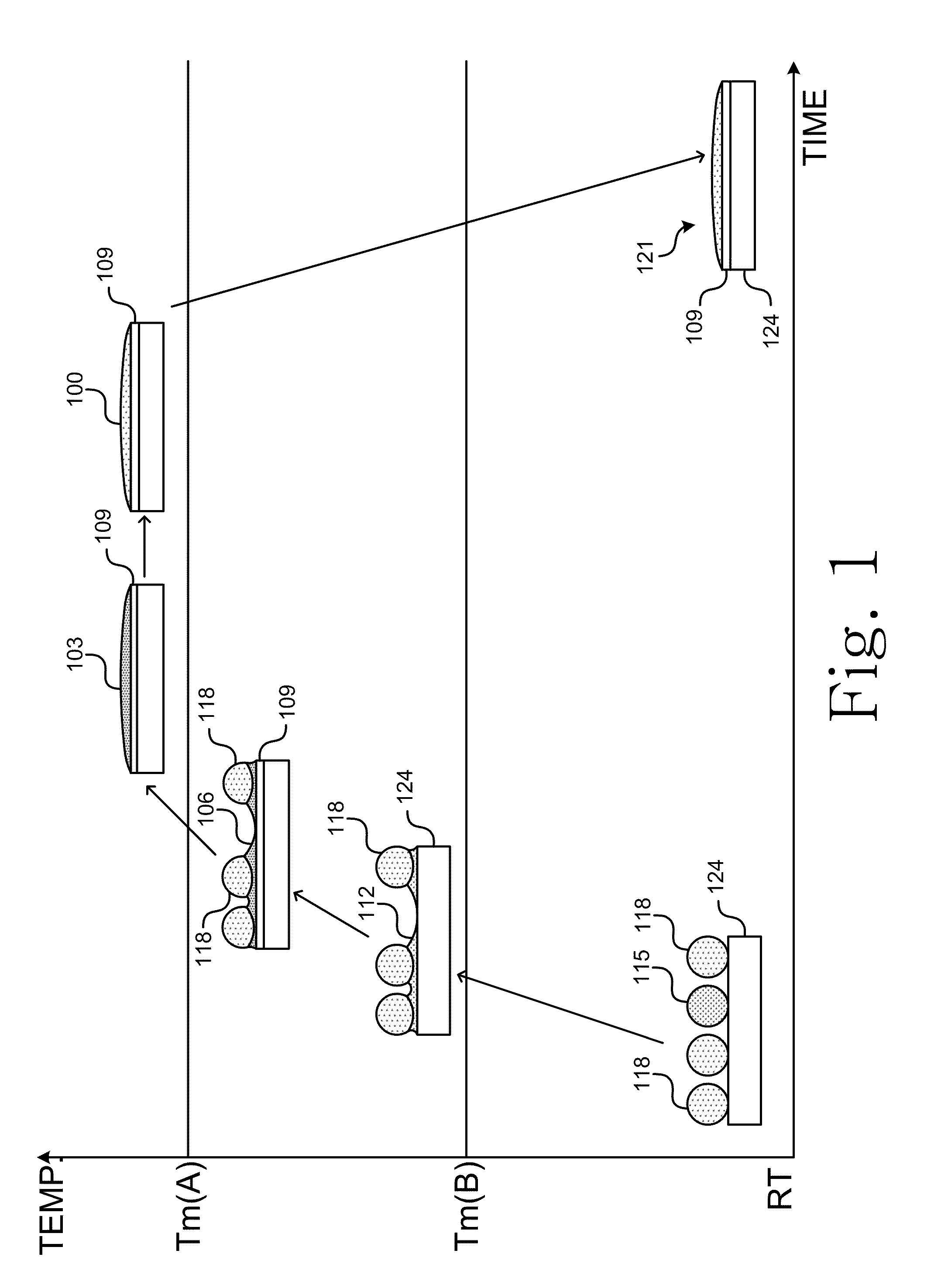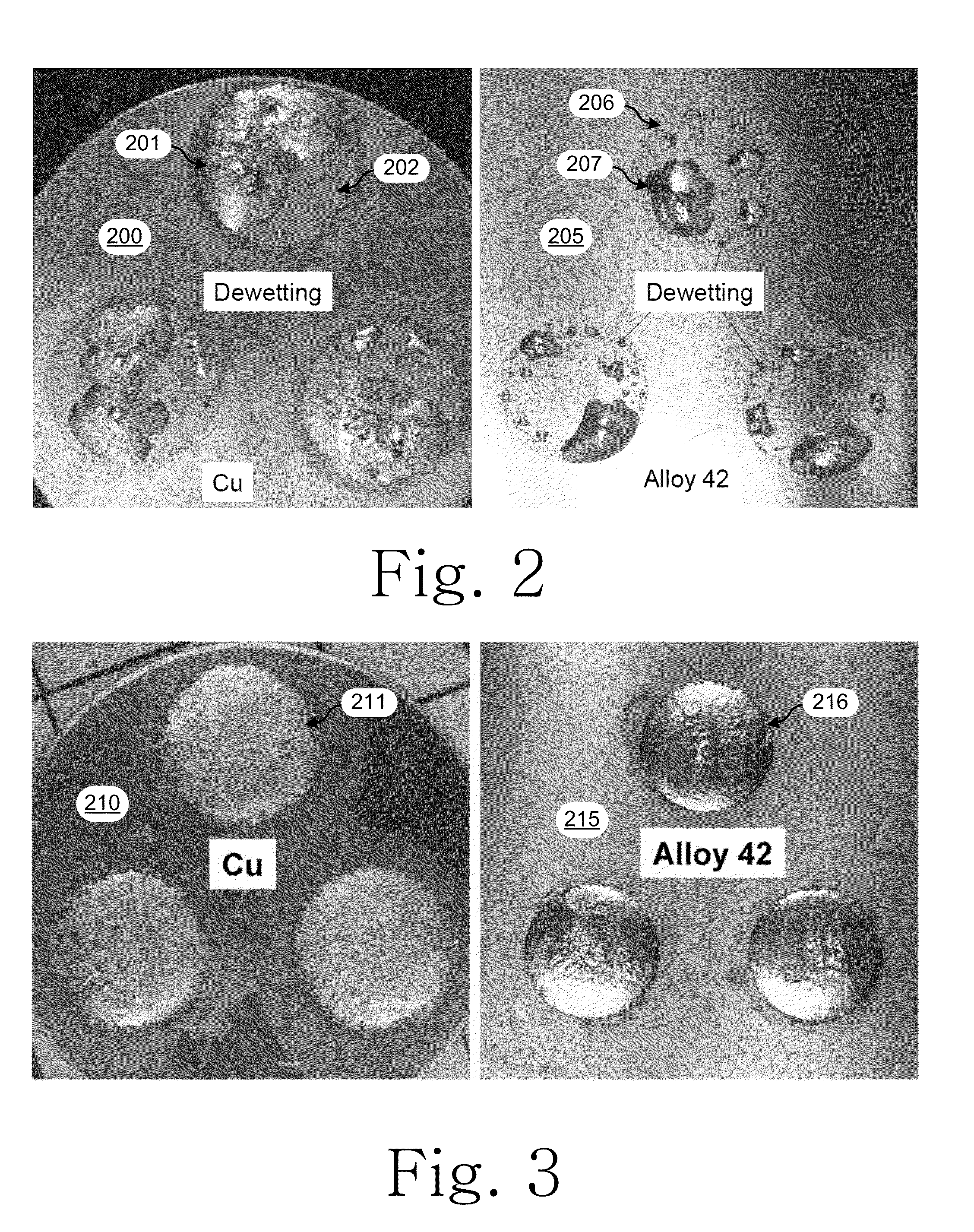Mixed alloy solder paste
- Summary
- Abstract
- Description
- Claims
- Application Information
AI Technical Summary
Benefits of technology
Problems solved by technology
Method used
Image
Examples
example
[0063]Various mixed alloy powder solder pastes that span the ranges described herein, were tested for solder performance.
[0064]Table 1 describes formulations of example mixed solder pastes made using a first alloy comprising Bi11Ag or Bi2.6Ag, a second alloy comprising Sn10Ag25Sb or Sn10Ag10Sb, and flux.
TABLE 1Weight percentages of mixed solderalloys using Group A second alloysBi11AgBi2.6AgSn10Ag25SbSn10Ag10SbSn15SbFlux80 wt %10 wt % 10 wt %82 wt %8 wt %10 wt %84 wt %6 wt %10 wt %86 wt %4 wt %10 wt %42 wt %42 wt %6 wt %10 wt %86 wt %4 wt %10 wt %84 wt %6 wt %10 wt %86 wt %4 wt %10 wt %
[0065]Table 2 describes formulations of example mixed solder pastes made using a first alloy comprising Bi11Ag, a second alloy comprising Sn3.8Ag0.7Cu, Sn3.5Ag, Sn0.7Cu, or Sn9Zn, and flux.
TABLE 2Weight percentages of mixed solderalloys using Group B second alloysBi11AgSn3.8Ag0.7CuSn3.5AgSn0.7CuSn9ZnFlux84 wt %6 wt %10 wt %86 wt %4 wt %10 wt %84 wt %6 wt %10 wt %86 wt %4 wt %10 wt %84 wt %6 wt %10 wt %...
PUM
| Property | Measurement | Unit |
|---|---|---|
| Temperature | aaaaa | aaaaa |
| Temperature | aaaaa | aaaaa |
| Solidus temperature | aaaaa | aaaaa |
Abstract
Description
Claims
Application Information
 Login to View More
Login to View More - R&D
- Intellectual Property
- Life Sciences
- Materials
- Tech Scout
- Unparalleled Data Quality
- Higher Quality Content
- 60% Fewer Hallucinations
Browse by: Latest US Patents, China's latest patents, Technical Efficacy Thesaurus, Application Domain, Technology Topic, Popular Technical Reports.
© 2025 PatSnap. All rights reserved.Legal|Privacy policy|Modern Slavery Act Transparency Statement|Sitemap|About US| Contact US: help@patsnap.com



